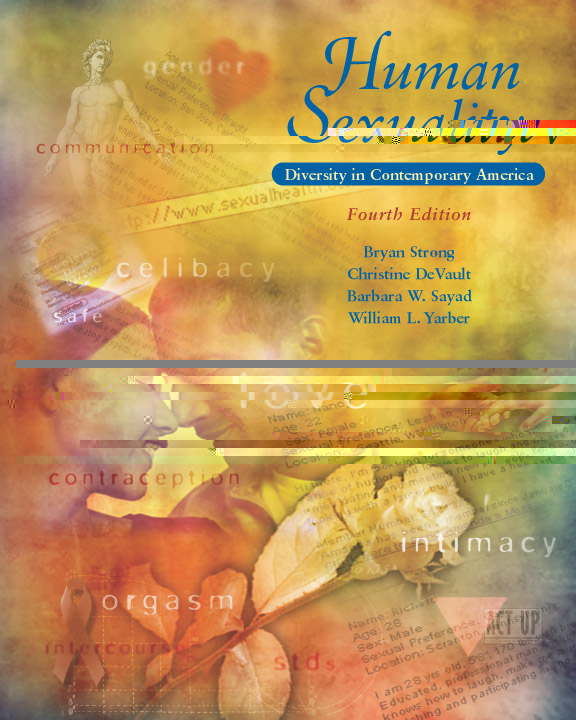 |  Human Sexuality: Diversity in Contemporary America, 4/e Brian Strong,
University of California, Santa Cruz
Barbara Werner Sayad,
California State University, Monterey Bay
Christine DeVault,
Cabrillo College
William Yarber,
Indiana University
Gender and Gender Roles
Sexuality Links Chapter 5Gender and Gender Roles
LINKS TO GET YOU STARTED
| About Gender
(http://www.gender.org.uk/about/index.htm)
This web site presents information about gender roles, gender variance and gender identity. |  |  |  | Gender Roles in Cyberspace
(http://www.muohio.edu/~psybersite/cyberspace/cyberfamily/gen.htx)
This web site presents some interesting ideas about similarities and differences between the genders in their on-line communications. |  |  |  | Gender Issues in Children's Literature
(http://www.indiana.edu/~eric_rec/ieo/digests/d135.html)
|  |  |  | Gender Stereotypes and Children's Literature
(http://langue.hyper.chubu.ac.jp/jalt/pub/tlt/98/jun/sugino.html)
"Besides being an important resource for developing children's language skills, children's books play a significant part in transmitting a society's culture to children. Gender roles are an important part of this culture. How genders re portrayed in children's books thus contributes to the image children develop f their own role and that of their gender in society." The second site presents information on gender stereotypes in children's literatures. |  |  |  | The Measurement of Psychological Androgyny
(http://www.garysturt.free-online.co.uk/bem.htm)
|  |  |  | Bem Androgyny Test
(http://www.velocity.net/~galen/androgyn.html)
Sandra "...Bem views Androgyny to mean both highly masculine and highly feminine, rather than neither masculine nor feminine (i.e. midway between the two extremes). It's better to be androgynous in today's society as men and women need to be adaptable, and willing to share all types of jobs, without saying that one job is woman's work or another job is just for men." The scale Bem developed to assess androgyny is the second site. |  |  |  | The Disparate Classification of Gender and Sexual Orientation in American Psychiatry
(http://www.priory.com/psych/disparat.htm)
"In 1973, the Board of Trustees of the American Psychiatric Association voted to delete homosexuality as a mental disorder from the seventh printing of the second edition of the Diagnostic and Statistical Manual of Mental Disorders, or DSM-II. Twenty-three years later, the inclusion of diagnostic categories for Gender Identity Disorder and Transvestic Fetishism in the fourth edition of the DSM continues to raise questions of consistency. In this paper, issues of gender identity and sexual orientation are compared in light of current definitions of mental disorder." |  |  |  | INTERSECTIONS: Gender, History & Culture in the Asian Context
(http://wwwsshe.murdoch.edu.au/intersections)
"Intersections is a refereed electronic journal conceived as an interactive forum for new research and teaching in the area of Gender Studies in the Asian region." |  |  |  | Development of Gender Roles: A Comparison with Asian Cultures
(http://library.kcc.hawaii.edu/external/asdp/soc/easian/gen-rep.htm)
This site presents a cross-cultural analysis of gender development, focusing specifically on Japan and China. |
|



 2002 McGraw-Hill Higher Education
2002 McGraw-Hill Higher Education